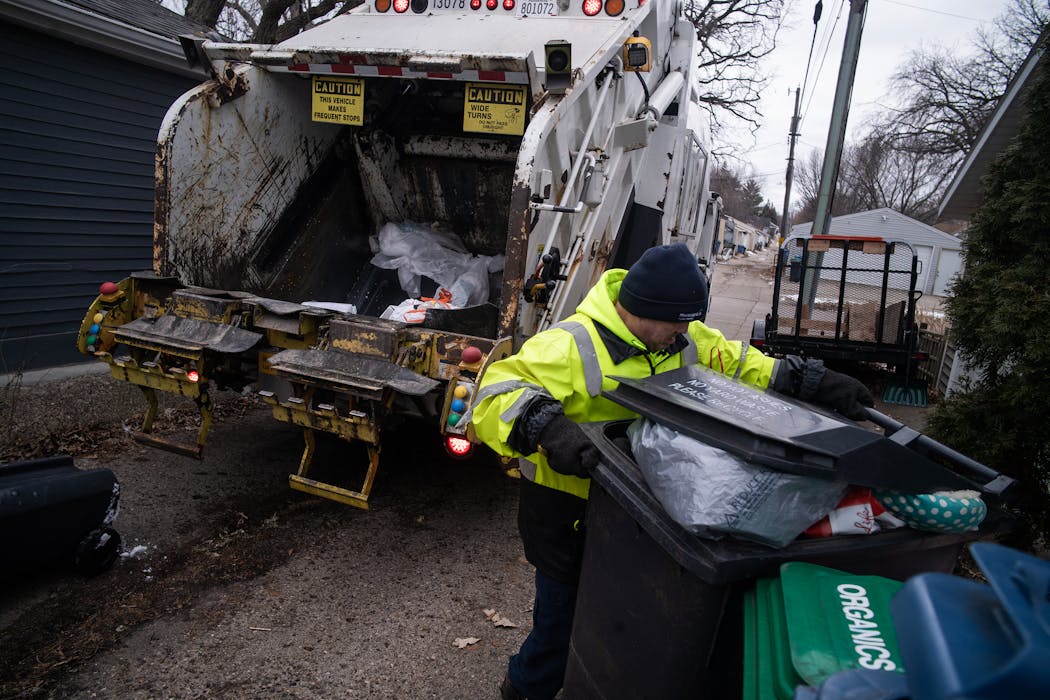When Hannah Cushing's car insurance rate first shot up, she shopped around and found a better deal. But when it happened again, to the tune of about $400 tacked on to her annual bill, no such luck.
"A lot of the quotes I was getting were quoting me less out of pocket, but for less insurance," said the 41-year-old, of Crystal. "So I kind-of gave up and was like, 'I guess this is just how it is now.'"
Americans are starting to feel some relief as inflation declines from a 40-year consumer price index (CPI) high of 9.1% in June 2022 to 3.1% year-over-year in November. Consumer prices, the Federal Reserve's preferred inflation gauge, fell 0.1% between October and November, the first monthly drop since April 2020.
Services inflation, though, has remained stubborn, peaking about a year after commodities began to decline and clocking in at 5.5% in November. Unlike commodities inflation, services include non-discretionary expenses such as car insurance, utilities and health care.
The trend isn't showing signs of reversing. Experts expect 2024 health insurance premiums to rise more than 5% on average nationally and potentially even higher in Minnesota. The state's largest utilities providers are anticipating higher rates and have asked regulators to allow additional increases.
Sticky services inflation is "going to continue to affect households in ways that they're likely going to see," said Tyler Schipper, an associate economics professor at the University of St. Thomas.
"They're not high-frequency touchpoints where I think people formulate their view about the economy in the same way that they do with food and gas, for instance," Schipper said, "but it is always a little bit of a gut-punch when you do realize how much higher it is than it was at the same time last year."
Power surge
In November, month-over-month CPI increases included services such as shelter, medical care and motor vehicle insurance, according to the U.S. Bureau of Labor Statistics. While energy commodities, including gasoline, were down year-over-year, energy services — electricity and natural gas — were higher.
Xcel Energy, Minnesota's largest electric utility, said the average residential customer's electric bill rose from about $1,226 a year in 2022 to about $1,271 in 2023, and the company expects bills to average about $1,289 annually in 2024.
Spokesman Theo Keith said "substantial and sustained investments" to add renewable energy and strengthen grid reliability amid a shift toward carbon-free power have largely driven the increases. The company is fighting state regulators' decision to limit a Xcel-requested increase in rates.
The average annual bill for CenterPoint Energy residential customers was $1,143 in 2022, a rise from $806 in 2021 and $689 in 2020, according to data the Citizens Utility Board of Minnesota compiled. CenterPoint, the largest home-heating provider in Minnesota, and Xcel's gas operation this year also asked the Public Utilities Commission to raise rates.
One big reason for the jump in CenterPoint gas bills in 2022, said spokesman Joshua Solis, is the cost of gas spiked in... part because of the Russian invasion of Ukraine. The cost of gas passes down directly to customers and makes up 50-60% of a residential bill, Solis said.
Gas prices should drop soon. Keith said Xcel natural gas bills will likely decrease roughly 21% this winter, from a monthly average of $149.19 a year ago to $117.43.
Property pressure
This time of year, consumers are also keenly aware of looming property tax bills, which reflect the inflationary pressures local governments are facing, including for services such as electricity and employee health insurance.
Governments have higher costs across the board, said Mark Ruff, finance director at the League of Minnesota Cities. At the same time, federal dollars that helped shore up budgets at the height of the pandemic are depleting.
For those renewing contracts for services such as tree trimming or trash collection negotiated when prices were lower, there are additional increases coming to consumers.
"If you're in that cycle, and you have to then absorb those costs, those are pretty dramatic increases that we're seeing in those contracts," Ruff said.
In Minneapolis, the monthly base fee for solid waste and recycling rose from $25.08 in 2021 to $27.92 in 2023, plus taxes. In St. Paul, the City Council voted in September to extend a contract with a consortium of trash haulers through March 2025, with total quarterly cost increases ranging from $0.86 to $17.92 for the biggest users.
Minneapolis retiree Tom Lais, 69, said rising property taxes and homeowners' insurance have made him question how much longer he can afford to stay in his house. Under the 2024 budget the Minneapolis City Council approved in December, the owner of a $331,000 home would see a tax increase ranging from $150 to $160.
"It's the fact that it's accumulating," Lais said, "and where is it going to stop?"
Cushing recently sold her house, and as a renter now, she has been able to avoid some cost increases that would have created a financial struggle, she said. Still, she's considering teeing up side gigs to bring in extra money.
"To some degree, as opposed to a lot of other people ... I have a good financial buffer," Cushing said. "I can dip into that safety net, but I don't want to."


